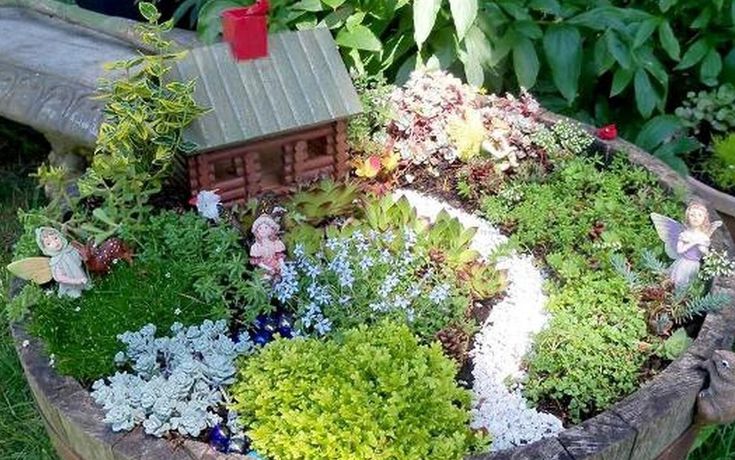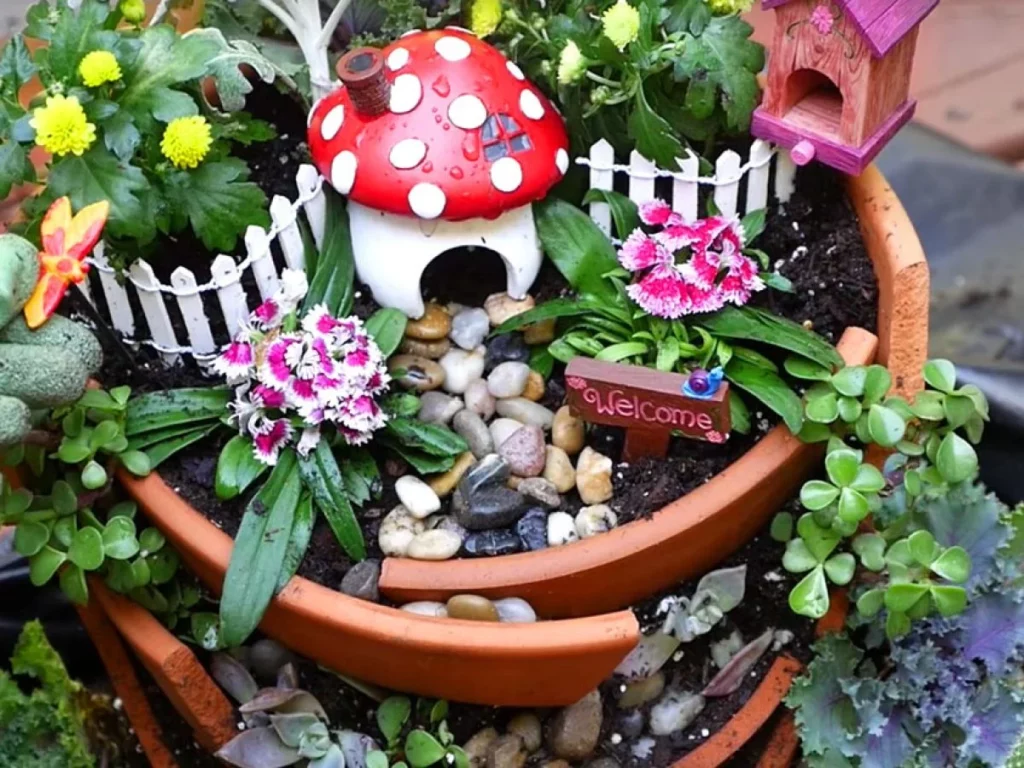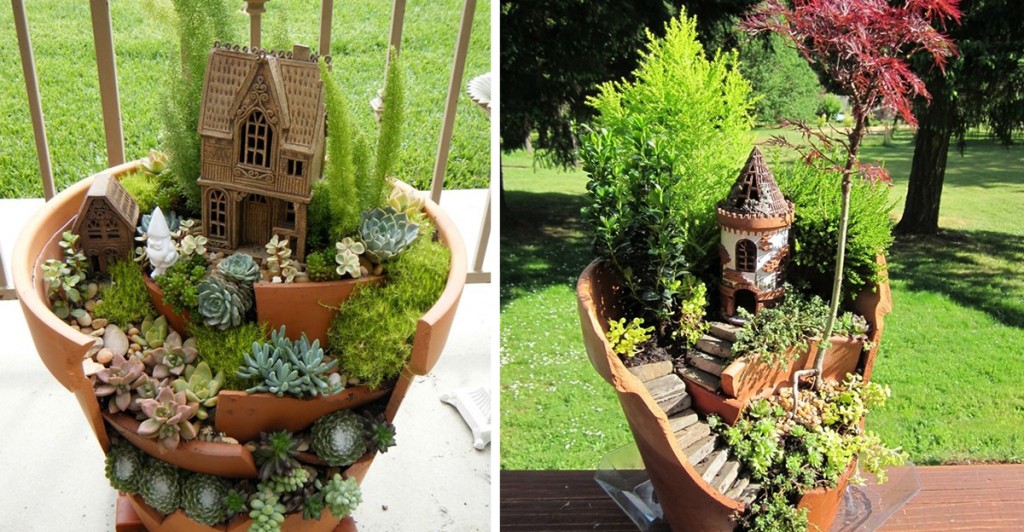Broken Pot Fairy Garden: A Magical DIY Project
Introduction
Creating a fairy garden is a delightful way to bring a touch of magic to your outdoor space. A broken pot fairy garden is particularly charming, as it transforms an otherwise discarded item into a whimsical scene straight out of a fairy tale. This DIY project is perfect for both seasoned gardeners and beginners looking to explore their creativity. In this guide, we will walk you through the steps of creating your own broken pot fairy garden, offering tips on design, plant selection, and maintenance.
What is a Broken Pot Fairy Garden?
A broken pot fairy garden is a miniature garden created within the shards of a broken pot. These gardens often feature small plants, decorative elements, and tiny fairy figurines arranged to create a magical scene. The broken pieces of the pot are used creatively to form terraces, stairs, or walls within the garden, adding depth and dimension to the design.
Read More: Tree pruning service: essential tips for homeowners.
Why Choose a Broken Pot Fairy Garden?
Broken pot fairy gardens have gained popularity for several reasons:
- Upcycling: They are an excellent way to repurpose a broken pot that might otherwise be thrown away, contributing to sustainable gardening practices.
- Creativity: These gardens allow for endless creative possibilities, as each broken pot presents a unique canvas.
- Space-Saving: Perfect for small spaces, a broken pot fairy garden can fit on a balcony, patio, or even a windowsill.
- Child-Friendly: This project is an engaging activity for children, encouraging them to explore gardening and use their imagination.
Getting Started: Materials and Tools
Before you begin, gather the following materials and tools:
- Broken Pot: The centerpiece of your fairy garden. The pot should have large enough pieces to create terraces or walls. If you don’t have a broken pot, you can carefully break one to create the necessary shards.
- Soil: A good quality potting mix is essential for the health of your plants.
- Small Plants: Choose plants that are suitable for container gardening and fit the scale of your garden.
- Decorative Elements: Miniature fairy houses, figurines, pebbles, moss, and other small decorations will bring your fairy garden to life.
- Tools: A small trowel, gloves, and a watering can.
Step-by-Step Guide to Creating a Broken Pot Fairy Garden
1. Prepare the Broken Pot
Begin by assessing the broken pot. If it is not already broken, you can use a hammer to carefully break it into large pieces. The goal is to create shards that can be used to build terraces or walls within the pot. Be sure to wear gloves to protect your hands from sharp edges.
Tip: If the pot has a large, intact piece, use it as the base of your garden, with smaller pieces arranged creatively around it.
2. Design the Layout
Before adding soil, design the layout of your garden. Arrange the pot shards within the pot to create levels, steps, or partitions. This is where your creativity comes into play. Consider the placement of plants and decorative elements, ensuring that the design is balanced and visually appealing.
Transition Words: Once your layout is planned, you can begin filling the pot with soil.

3. Add Soil and Plants
Fill the pot with soil, making sure to pack it firmly around the shards to keep them in place. Begin planting by starting with the largest plants first, then adding smaller ones. When selecting plants, consider the following:
- Scale: Choose small plants that will not outgrow the pot. Succulents, dwarf ferns, and miniature flowering plants are ideal.
- Light Requirements: Ensure that the plants have similar light and water needs.
- Texture and Color: Mix plants with different textures and colors to add interest to the garden.
Tip: Leave some space for decorative elements and pathways.
4. Incorporate Decorative Elements
Now it’s time to add the magic! Place fairy houses, figurines, and other decorations in your garden. Use small pebbles or sand to create pathways, and add moss for a natural, forest-like feel. Arrange the decorations in a way that tells a story or creates a scene.
Transition Words: After placing the decorations, step back to view the garden from different angles to ensure it looks cohesive.
5. Water and Care for Your Fairy Garden
Once your broken pot fairy garden is complete, give it a light watering. The amount of water needed will depend on the types of plants you’ve chosen. Be careful not to overwater, as excess moisture can cause the plants to rot.
Maintenance Tips:
- Watering: Keep the soil moist but not soggy. Water when the top inch of soil feels dry.
- Sunlight: Place the garden in a spot that receives the appropriate amount of light for your plants.
- Pruning: Regularly trim the plants to keep them small and neat.
- Cleaning: Remove any fallen leaves or debris to keep the garden looking fresh.
Creative Ideas for Your Broken Pot Fairy Garden
There are endless possibilities when it comes to designing your fairy garden. Here are some ideas to inspire you:
- Seasonal Themes: Create a garden that reflects the seasons, with spring flowers, summer greenery, autumn leaves, or winter decorations.
- Fairy Village: If you have multiple broken pots, use them to create a series of interconnected gardens, forming a fairy village.
- Water Features: Add a small water feature, such as a tiny pond or fountain, for a tranquil touch.
- Lighting: Use solar-powered fairy lights or miniature lanterns to illuminate your garden at night.
Transition Words: Whether you choose a classic fairy tale theme or a modern twist, the key is to let your imagination guide you.

Benefits of Creating a Broken Pot Fairy Garden
Building a broken pot fairy garden offers several benefits:
- Stress Relief: Gardening is known to reduce stress, and working on a small, creative project like this can be particularly soothing.
- Connection with Nature: Even if you don’t have a large outdoor space, a fairy garden allows you to connect with nature.
- Educational Value: This project can teach children about plant care, design, and the importance of recycling.
- Sustainability: By repurposing a broken pot, you contribute to reducing waste and promoting eco-friendly practices.
Conclusion
A broken pot fairy garden is more than just a decoration; it’s a creative expression that brings joy and a sense of wonder to any space. Whether you’re an experienced gardener or a beginner, this project offers the perfect opportunity to explore your creativity and connect with nature. With careful planning, the right materials, and a little imagination, you can create a miniature world that delights both the eyes and the spirit.

